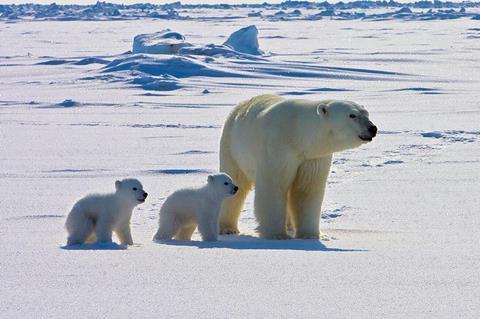As the Arctic warms, polar bears now face a greater risk of contracting several pathogens than bears three decades ago. Karyn Rode and Caroline Van Hemert of the U.S. Geological Survey report these findings in a new study published October 23, 2024, in the open-access journal PLOS ONE.

The environmental changes associated with global warming are creating new opportunities for viruses, bacteria and parasites to infect Arctic wildlife. Polar bears, a top predator with a large range, may be affected by changes in pathogen transmission.
READ MORE: Madagascar mouse lemur retroviruses surprisingly similar to ones found in polar bears or sheep
READ MORE: Climate change is multiplying the threat caused by antimicrobial resistance
In the new study, researchers examined blood samples from polar bears in the Chukchi Sea in 1987-1994 and then three decades later, 2008-2017, looking for antibodies to six pathogens. Five of these pathogens had become more common in the later samples: the parasites that cause toxoplasmosis and neosporosis, the bacteria that cause rabbit fever and brucellosis, and the canine distemper virus. The increases in the prevalence of these pathogens represent some of the most rapid changes in exposure ever reported among polar bears.
Exposure risk
Researchers also looked at factors that increased the bears’ risk of exposure to these pathogens and found that exposure varied with diet and was higher in females than males, potentially as a result of pregnant females denning on land to raise cubs.
In the Arctic, where warming is occurring at nearly four times the global rate and polar bears are experiencing a rapid loss of their sea ice habitat, infectious diseases present a growing concern to both wildlife managers and human communities. People living in the Arctic sometimes hunt polar bears for food, and many of the pathogens whose presence was detected in this study can also be transmitted to humans. The researchers conclude that since polar bears face multiple stressors related to climate change and are a subsistence food, further work is warranted to screen these populations for signs of disease.
The authors add: “For some pathogens, the number of polar bears testing positive for serum antibodies, an indicator of pathogen exposure, more than doubled and were among the highest levels identified in a population. These results suggest that pathogen transmission pathways have changed in this Arctic ecosystem.”







No comments yet